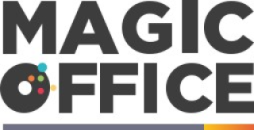
Understanding the Importance of Leave Management
The Critical Role of Efficient Leave Management
Effective leave management is a foundational element that supports overall business success. In the fast-paced environment of UK businesses, proper management of employee leave can significantly influence operational efficiency. From tracking leave requests to ensuring compliance with leave policies, a well-organised system is crucial for maintaining a smooth workflow.
An employee’s absence can disrupt daily operations, affecting payroll and project timelines. To circumvent this disruption, businesses must adopt robust management software solutions. These solutions streamline the process, offering features such as leave calendar, time tracking, and real-time updates on leave absence.
Utilising a best-in-class leave management system ensures that leave requests are handled promptly and efficiently. This not only keeps the employees satisfied but also maintains workflow continuity. When management systems are not in place, compliance issues and conflicts between planned leave dates can arise, placing additional administrative burdens on management staff.
To manage these challenges effectively, organisations can leverage modern management apps which are user friendly and often come with a free trial. Tools like vacation tracker and sick leave management utilities ensure that planning for both expected and unexpected employee time off is hassle-free and straightforward.
Companies looking to enhance overall productivity must consider integrating comprehensive leave management solutions that accommodate various types of employee absences. This adaptation not only boosts internal efficiency but also increases employee satisfaction significantly.
By embracing the use of SF Gateway solutions, businesses can enhance employee access and streamline their leave management processes efficiently.
Challenges Faced by UK Companies in Leave Management
Common Obstacles in Managing Employee Absences
Managing employee leave is vital for ensuring productivity and maintaining morale, yet UK companies face several challenges in this area. The difficulty often arises from balancing the diverse needs of the workforce with the company’s operational requirements.
Complexity of Leave Policies
Leave policies can be complex, varying significantly from one organisation to another. This complexity is compounded by diverse types of leave—such as vacation, sick leave, and parental leave—which often require different management approaches. Ensuring compliance with regulations and fair employee treatment can be arduous, especially without effective management systems in place.
Tracking and Approving Leave Requests
The administrative burden of handling leave requests is another pressing issue for many UK companies. Without a streamlined process, HR departments often find themselves overwhelmed by the tracking and approval of leave dates. This can lead to delayed decisions, impacting employee satisfaction and department workflows.
Integration of Leave Management with Payroll
Seamless integration of leave management with payroll systems is also a prominent challenge. Manual methods increase the risk of errors and inefficiencies, potentially affecting payroll accuracy and employee trust. A comprehensive management system can alleviate this strain by automating tracking and improving accuracy in real-time.
Maintaining Operational Efficiency
Another significant hurdle is ensuring that employee absences do not disrupt operations. Companies often scramble to redistribute workloads or find replacements, which can be disruptive. An efficient management app can provide a clear calendar and absence management features, making the process more predictable and less burdensome.
Exploring the Best Solutions
Addressing these hurdles requires a robust approach to leave management systems. Exploring the top solutions for effective absent management can provide insights into best practices and tools designed to tackle these challenges.
Features to Look for in Leave Management Software
Essential Characteristics of Effective Leave Management Tools
When choosing employee leave management software, it's crucial to identify key features that can enhance your organization's time tracking and absence management capabilities effectively. Here's a comprehensive guide to help companies pick the best solutions for their needs:- User-Friendly Interface: An intuitive design is vital for ensuring ease of use across all levels in an organization. A tool that's difficult to navigate can lead to errors in leave tracking and create frustrations among employees submitting leave requests.
- Calendar Integration: The ability to seamlessly integrate with existing calendars offers employees and managers a clear view of upcoming absences and approved leave dates. Maintaining a synchronized calendar can reduce scheduling conflicts and improve team productivity.
- Real-Time Updates: Having access to real-time data allows HR and managers to make informed decisions quickly. Real-time information ensures that everyone is aware of pending requests and updates to leave policies, promoting transparency.
- Automated Leave Requests and Approvals: Automation can significantly streamline the leave request process, reducing the administrative burden on HR teams. Automated systems can track, approve, and notify relevant parties about leave requests, increasing efficiency.
- Comprehensive Absence Tracking: The system should provide detailed reports on employee leave, including vacation, sick leave, and other absence types. This feature supports compliance with leave policies and can improve payroll accuracy.
- Integration Capabilities: Choose a system that can integrate with other management systems such as payroll and human resource software. This integration ensures data consistency and reduces manual data entry errors.
- Customization Options: Every organization has unique leave policies and compliance regulations. Offering customizable options within the management software helps adapt the features to meet specific organizational needs efficiently.
- Free Trial Availability: Many top leave management apps offer a free trial period. This allows organizations to test the system's capabilities before committing to a purchase, ensuring it meets the specific requirements.
Benefits of Implementing Leave Management Solutions
Transforming Efficiency in the Workplace
Implementing leave management solutions can drastically transform the efficiency of a workplace. When employee leave is handled with precision and ease, businesses can experience a smoother workflow, enhanced productivity, and improved staff satisfaction. A robust leave management system integrates with existing payroll systems, ensuring compliance with leave policies and accurate tracking of absences, such as sick leave or vacation time. One significant advantage is the reduction in manual time tracking. With an automated system, companies minimize the risk of human error that can occur with manual processes. This automation also allows for real-time tracking of leave requests, granting managers immediate visibility into employee time off without delay. Furthermore, integrating a user-friendly app can streamline the application and approval processes for both managers and employees.Cost-Effective Resource Allocation
One of the most notable benefits of a leave management software is better resource allocation. Resources can be managed more effectively when employee leave patterns are monitored accurately. Absence management becomes more predictable, enabling managers to plan ahead and allocate resources accordingly. This forward-thinking approach aids in eliminating unnecessary costs that stem from understaffing or overstaffing at critical times. A well-designed system helps maintain a comprehensive vacation tracker and calendar. These features ensure employees' preferred leave dates do not overlap significantly, preventing potential workflow disruptions. Companies can track leave absence patterns and adjust their strategies in alignment with business objectives and priorities.Enhancing Employee Satisfaction and Compliance
Implementing an intuitive leave management system results in improved employee satisfaction. The process of submitting leave requests becomes seamless, enabling quicker responses to their needs. When employees feel that their time is valued, engagement, retention, and morale can experience a positive uptick. Furthermore, a management system ensures compliance with best leave policies and regulation requirements. This is vital for UK companies aiming to adhere to statutory obligations and maintaining a lawful operational standard. With features like buddy punch or free trial options, businesses can explore and customize the best leave management solutions that suit their organization’s needs.Case Studies of Successful Implementation in UK Companies
Practical Examples of Excellence: Success in Leave Management Implementation
Successfully implementing leave management solutions has transformed the way many UK companies handle employee leave and absence management. Real-world examples highlight the effectiveness and efficiency gains that can be achieved by adopting these systems, underscoring the benefits discussed earlier. One example comes from a mid-sized UK firm that struggled with the complexities of manual leave requests and tracking. The adoption of a comprehensive leave management software streamlined their entire process. Employees could view their leave dates, submit leave requests, and get real-time status updates via a user-friendly app. The management gained significant insights into leave patterns, allowing them to better plan workload distributions and minimize disruptions caused by unexpected absences. Another success story involved a retail chain seeking to reduce payroll inaccuracies and enhance compliance with leave policies. Using advanced features in a leave management system, the company achieved seamless integration with payroll systems, reducing errors and ensuring compliance with local laws and company-specific leave policies. A tech startup faced challenges with sick leave tracking and maintaining employee morale. By implementing a vacation tracker with a simple, intuitive calendar interface, they improved transparency and employee satisfaction. They offered a free trial of the system to gather user feedback, which helped tailor features to better meet employee needs. The best leave management systems also offer robust absence management, including time tracking features that allow for precise monitoring of employee time, unsurprisingly resulting in happier HR teams and enhanced productivity. These case studies illustrate how prioritizing effective systems for leave management not only simplifies the request and approval process but also aligns with future trends that focus on flexibility, scalability, and employee wellbeing. Whether through improved payroll integration, better compliance tracking, or enhancing overall employee experience, the impact of well-chosen management systems is profound.Future Trends in Leave Management for UK Businesses
Emerging Trends in Employee Leave and Absence Management
The landscape of leave management in the UK is evolving rapidly with businesses striving to enhance their leave processes. As organisations adapt to increasingly dynamic work environments, there are several emerging trends that are shaping these systems.
One significant trend is the growing reliance on cloud-based software solutions. These systems offer real-time access to leave data, simplifying time tracking and improving transparency for both employers and employees. With these systems, organisations can efficiently handle leave requests, absences, and employee leave data, facilitating better compliance with leave policies and streamlining the overall management.
Another key development is the integration of leave management systems with other HR processes, such as payroll and employee performance management. This integration ensures that all related functions are aligned, reducing the risk of errors and enhancing efficiency. It also provides insights into patterns relating to employee time, vacation utilisation, and sick leave, enabling businesses to develop data-driven strategies for workforce planning.
User-friendly mobile apps are also gaining traction as businesses seek to provide flexible and convenient leave management solutions. Employees can submit leave requests, check leave dates on a calendar, and monitor their leave balances through these apps. This accessibility encourages proactive leave planning and reduces administrative burdens on HR teams.
- Implementation of absence management systems has proven successful for many UK companies, enhancing employee satisfaction and operational efficiency.
- Features like vacation trackers and buddy punch systems have become essential in offering a seamless leave experience for employees.
- Free trial offerings and book demo options allow businesses to evaluate the best leave management software before full implementation.
As the future of leave management unfolds, it is crucial for UK businesses to stay ahead by adapting to these innovative technologies, ensuring they align with their company’s unique processes and requirements.













